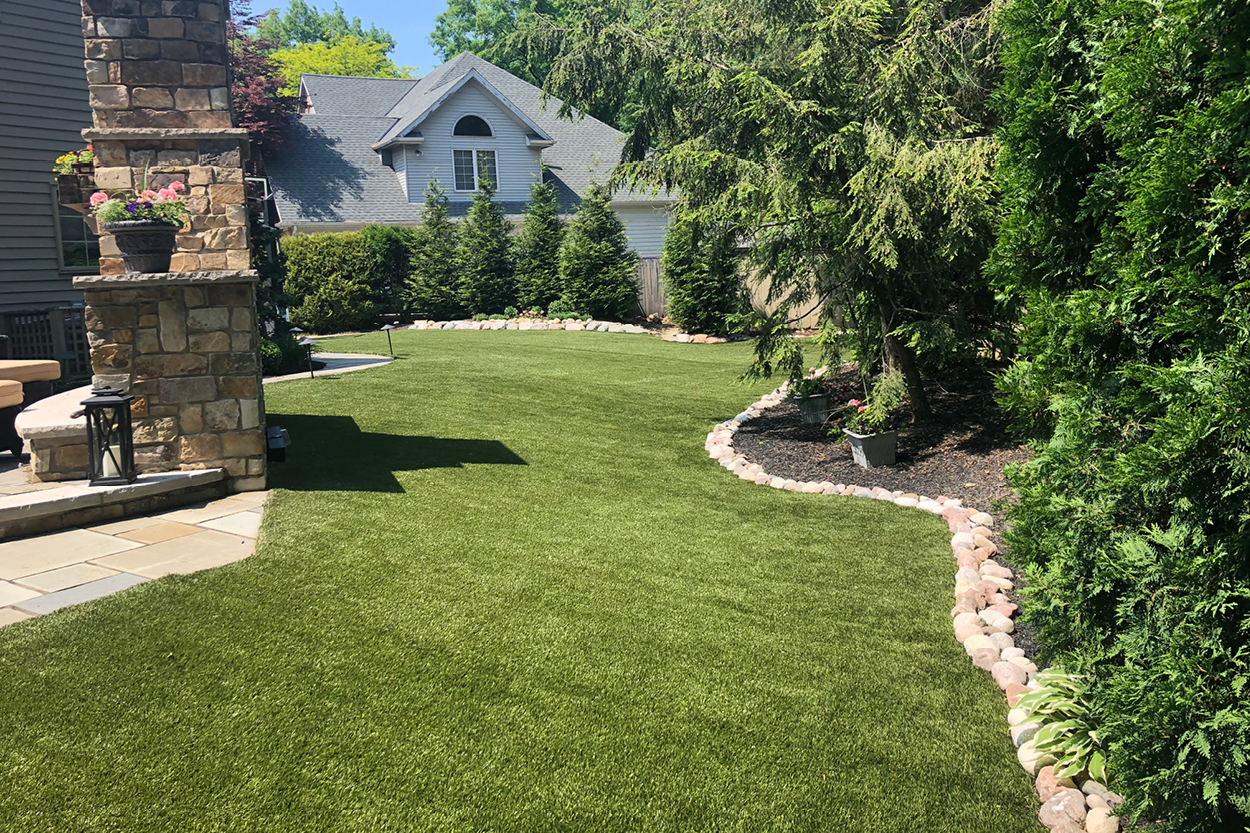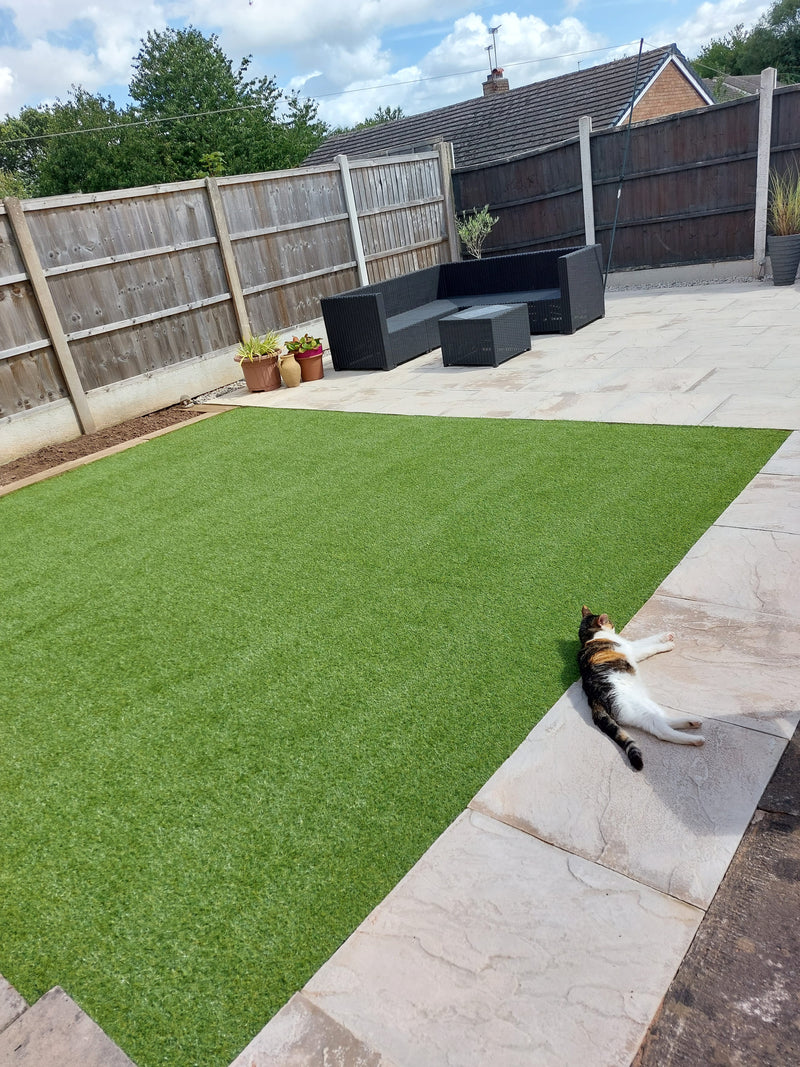Exactly How Does Synthetic Grass Installation Change Your Landscape?
The setup of artificial lawn offers a multifaceted chance for landscape transformation, using a blend of aesthetic improvement and useful advantages. Past the immediate aesthetic appeal of a regularly eco-friendly space, synthetic turf significantly minimizes upkeep needs and water intake.
Benefits of Synthetic Grass
When considering landscaping services, the advantages of synthetic grass ended up being significantly obvious. Among one of the most significant advantages is its low maintenance demands. Unlike all-natural yard, which demands regular mowing, watering, and fertilization, artificial turf preserves its lavish look without these labor-intensive tasks. This allows homeowner to assign their time and sources to various other quests.
Additionally, synthetic grass supplies a constant having fun surface, making it suitable for recreational locations and sporting activities fields. Mesa artificial turf. Its resilience ensures that it can stand up to hefty foot website traffic without the deterioration connected with natural turf, therefore promoting year-round usability
Environmental benefits also play a critical duty in the allure of fabricated lawn. By getting rid of the demand for herbicides and pesticides, it contributes to a healthier environment. Moreover, the decrease in water use is substantial, particularly in locations prone to dry spell.
Furthermore, artificial grass boosts aesthetic appeal, providing a dynamic green landscape that stays consistent throughout the periods. This consistency can boost building worth and aesthetic charm, making it an appealing option for businesses and home owners alike. In summary, the countless advantages of man-made lawn make it an engaging choice for modern landscape design options.
Price Financial Savings Gradually

To start with, synthetic grass gets rid of the requirement for persisting costs connected to water, fertilizers, chemicals, and yard maintenance solutions (Mesa artificial turf). Home owners can anticipate to save considerably on their water bills, specifically in areas prone to dry spell, where watering of natural grass can become much too costly. Additionally, the minimized requirement for chemical treatments not just reduces expenses however likewise lessens labor costs connected with grass care
Over time, the cumulative monetary advantages of man-made turf can significantly exceed the first prices, making it a smart financial investment for those looking to enhance their landscapes while likewise managing their budgets properly. In recap, the long-lasting expense financial savings linked with artificial grass make it an eye-catching choice for property owners looking for both looks and financial vigilance.
Ecological Effect
The ecological influence of artificial grass is a subject of substantial interest and argument. Advocates argue that artificial turf saves water, as it removes the demand for watering, which is particularly helpful in arid regions. This water conservation can lead to lowered strain on local water sources and reduced energy costs for home owners. Additionally, synthetic grass gets rid of the requirement for chemical fertilizers and pesticides, which can pose risks to regional ecosystems.
Nevertheless, problems concerning the ecological footprint of artificial turf linger. The production of synthetic materials often requires considerable power and petroleum sources, adding to carbon discharges. Furthermore, when fabricated grass gets to the end of its life process, disposal can come to be troublesome, as numerous products are not naturally degradable and can wind up in landfills.
An additional area of issue is the possibility for microplastics to leach right into the dirt and waterways, which can adversely affect water life and communities. Consequently, while artificial grass provides particular ecological benefits, it additionally positions difficulties that warrant careful factor to consider. Balancing the advantages of water preservation with the environmental effects of this article production and disposal is essential for making educated landscape design choices.
Design Adaptability
Man-made turf opens a globe of layout flexibility, allowing property owners and landscape designers to create aesthetically pleasing and functional outside rooms. Unlike conventional yard, synthetic turf can be customized to fit different styles, designs, and objectives, enhancing the general landscape layout.
One of the main advantages of artificial grass is its flexibility. Homeowners can select from a variety of textures, colors, and pile heights, find guaranteeing that the lawn enhances existing attributes and building components.

Maintenance and Durability
With marginal upkeep called for, synthetic grass supplies a functional remedy for homeowners seeking a low-maintenance landscaping alternative. Unlike natural lawn, which demands regular mowing, watering, and fertilizing, synthetic grass substantially reduces the moment and initiative required to maintain an appealing yard.
The longevity of synthetic lawn is one more compelling advantage. Usually, artificial turf can last in between 15 to 25 years, depending on the quality of materials made use of and the level of foot web traffic it endures.
In addition, upkeep tasks for synthetic grass are straightforward. Periodic cleaning to keep the blades upright, washing to eliminate particles, and periodic infill replenishment are normally adequate to keep its appearance and performance. This ease of maintenance allows home owners to enjoy their exterior areas without the burden of considerable labor.
Final Thought
In verdict, man-made grass setup dramatically enhances landscapes by supplying a vivid, low-maintenance alternative to all-natural yard. On the whole, artificial grass emerges as a sustainable and useful option for changing exterior spaces into useful and visually enticing settings.

In verdict, artificial turf setup significantly boosts landscapes by giving a dynamic, low-maintenance choice to natural turf.